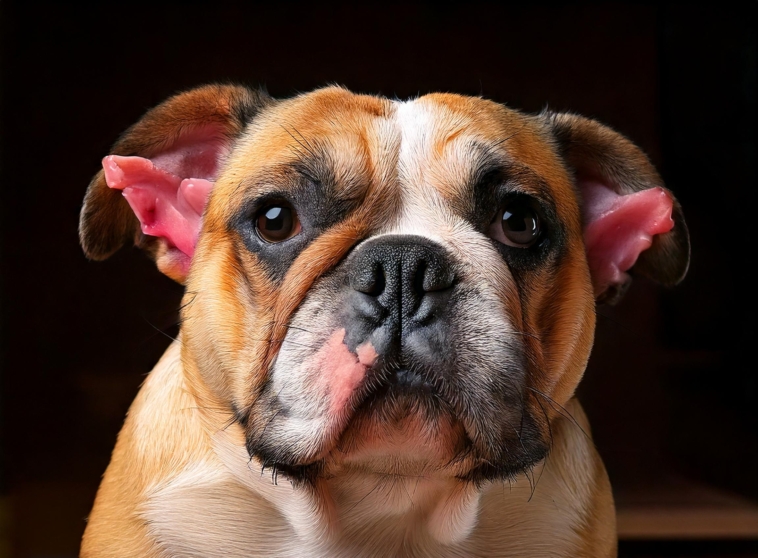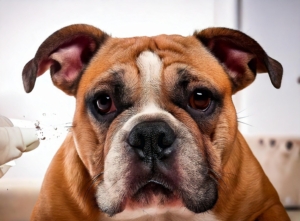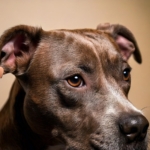Last updated on October 24th, 2024
Here’s an overview:
Introduction to Ear Infections in Bulldogs
Ear Infections – Some Facts Relating to Bulldogs
Common Causes of the Problem in Bulldogs
Facts in Recognition of Ear Infections in Bulldogs
Getting a Diagnosis from a Vet
Ear Infections at Home: Treatment of moderate intensity
Advanced Treatment Options and Medication
Ways to Avoid Ear Infections in Bulldogs
Feeding and Diet as the Approaches of Immune System
When to Contact Emergency Veterinary Services
Case studies and examples from the actual practice
Introduction to Ear Infections in Bulldogs
Ear infections are a common health concern for Bulldogs, a breed known for its distinctive facial structure and skin folds. These anatomical features can create a warm, moist environment conducive to bacterial and yeast growth, leading to infections. Factors such as allergies, moisture exposure, and wax buildup further increase the risk. Symptoms often include itching, redness, swelling, and a foul odor, which can cause significant discomfort for your pet. Early detection and treatment are essential to prevent complications, making awareness and regular veterinary check-ups vital for Bulldog owners.
Ear Infections – Some Facts Relating to Bulldogs
Bulldogs are a common breed that shows ear infections constantly. This problem stems from their inherent anatomical ear shape and features. The ear infections can be categorized as external ear (otitis externa), middle ear (otitis media) and internal ear inflammation (otitis interne).
Common Causes:
- Allergies: Food and other allergens
- Moisture: From swimming or bathing
- Ear Shape: Ears that do not stick out enough
- Wax Accumulation: Ear wax
Symptoms:
- Itching: Ear scratching or pawing
- Smell: Offensive smell from the ears
- Discharge: Unusual discharges
- Swelling: Red swollen inner ear
All these factors assist in the prompt recognition and proper treatment of ear infections among bulldogs.
Common Causes of the Problem in Bulldogs
Due to various factors bulldogs are prone to ear infections. Of importance are:
- Anatomical structure: Bulldogs have shorter ear canals, that result in reduced airflow and difficulty removing moisture.
- Environmental Factors: Some types of food or environmental allergens can cause inflammation and infection due to too much wax production.
- Moisture retention: The loose ears in bulldogs may hold moisture leading to breeding sites for bacteria and yeast.
- Ear Mites: Relatively small parasites that invade the ear canal causing inflammation.
- Foreign Bodies: Grass etc. can be stuck in the ear making the ear cavity sensitive.
- Endocrine dysfunction: Major endocrine dysfunction, that is hypothyroidism is also a predisposing factor for this infection in bulldogs.
Facts in Recognition of Ear Infections in Bulldogs
Ear infections, something that has chronicled the bulldog breed culture, can occur at any age. Here are some specific signs to look out for:
- Ear Scratching: It becomes noticeable when bulldogs repeatedly scratch or paw at their ears.
- Head Shaking: Dogs tend to shake their heads constantly as a part of this activity.
- Odor: Ear canal has an unpleasant, putrid smell which suggests pathology.
- Discharge: Signs to note are discoloration of the skin such as yellow, brown, or bloody areas.
- Inflammation: Rosy spots can be seen around the inner ear which is a key sign.
- Sensitivity: Dogs may only exhibit discomfort or even pain when the ear area is touched by oneself.
- Balance Issues: In extreme cases, even the simplest tasks like sitting or walking becomes a challenge.
Getting a Diagnosis from a Vet
If Bulgarians have recurrent ear discharges or show symptoms of a bulge favors ear infections, physicians will try to reach same day management interventions. There are several ways through which one can perform operations including:
- Visual Inspection: Assessing the individual nose or ear without purple and yellow tissue and looking for any bone overgrowth or exostosis.
- Otoscopy: Painters need instruments that are specialized and an otoscope is one of them and its use is for addressing the deep parts of the ear canal.
- Cytology: Some bacteria, yeast, parasites present in ear discharge can also be checked under a low power lens.
- Culture and Sensitivity: When this happens or in cases where the ear infection is somewhat traumatic or recurrent, a culture is often recommended to see what sort of organism it is and suggest what kind of antibiotic to use.
Regular visits to the veterinarian help manage recurring infections and make changes whenever necessary.
Ear Infections at Home: Treatment of moderate intensity
- Cleaning of the Infected Ear:
Pour a little of the vet recommended solution in the infected ear figuring out the directions of flow with its volume. Do not use cotton buds as they may create further harm. - Wiping the Ears:
Applying the warm compress on the ear to manage pain and swells. Confirm that the compress is warm yet not hot. - Douching:
This composed solution may also be used for rinses. Make an equal mixture of water and vinegar in a bowl and spread it with a cotton ball and dial it with a weaker ratio. - Oiling the Ear Canals:
These drops will help in the resolution of infection and wax in the ear. - Establishing Control and Loss And Control LAC Checks:
Conduct routine checks on the ears to watch for recurrent infections. offered treatments should be rigidly observed to avoid reuse of the same infections.
Advanced Treatment Options and Medication
The condition is also referred to as the Bullous Ear Infection Management Protocol (BEIMP) where ear infection in bulldogs has got several treatments which are as follows:
- Ear flushes: Cleaning away the rubbish and the discharge.
- Advanced imaging (CT/MRI) : Assess what lies beneath.
- Surgical intervention: For chronic or very severe cases.
It is important to avoid any treatment without evaluation of its efficacy for the chosen methods will be orthopedic bulldog spatial strategies.
Ways to Avoid Ear Infections in Bulldogs
Such infections can be avoided by regularly cleaning the owners’ ears. Always clean the ear using the vet’s prescribed ear wash and never push anything down close to the eardrum. Dry the ear canals completely after baths or swimming in chlorinated water.
- Clean every place your Bulldog stays in order to reduce the amount of dust and allergens.
- Clip the hair around the ears to promote better circulation.
- Give the bulldogs a well balanced diet for better immunity.
- At the first sign of trouble, do not wait and go visit the veterinarian right away.
Routine check-ups are important in the prevention of the chances of policies or other types of problems in the initial stages.
Feeding and Diet as the Approaches of Immune System
A balanced diet is a must for Mastiffs because this ensures that they have good immunity. Important nutrients, vitamins, and minerals to the body are important in improving health and fighting off infections.
Proteins: Essential for the rebuilding of tissues and the creation of an immune response.
Vitamins:
- Vitamin A: Essential for skin and mucus protection.
- Vitamin C: Contains antioxidants that help in the immune system.
- Vitamin E: Acts as an immune enhancer.
Minerals:
- Zinc: Important for production of immune cells.
- Selenium: Safeguards cells against cell barbarism.
Omega-3 Fatty Acids: Help reduce inflammatory reactions and thus help in preventing infections.
Role of Cleaners and Groomers
Cleaning and grooming come in handy in avoiding ear infections the bulldog may have.
Key Advantages:
- Cleaning of Excessive Wax: Regular cleaning avoids the possibility of having excessive ear wax which could be home to a lot of bacteria.
- Controlling the Environment Within the Ears: A lot of care prevents the ears from filthy conditions which encourage a lot of yeast and bacteria.
Best Practices:
- Use cool ear cleaners as prescribed by a veterinarian.
- Once a week but a vet may recommend otherwise.
- Check for any sign of infection or pain and discomfort.
When to Contact Emergency Veterinary Services
Emergency service of veterinary medicine should be contacted when a bulldog shows the following signs:
- Traffic Trauma: Severe pain that causes plenty of crying with heads bandaged, or aggressiveness when ears are caressed.
- Infection Discharge and Odor: The presence of pus with foul smell could be an indication of an abscess or even a bigger infection.
- Lethargy: Abnormal tiredness and or reluctance of moving.
- Development of Loss of Hearing: There are cases where hearing loss is a sudden occurrence and in some cases, there is gradual loss.
Case studies and examples from the actual practice
Case study 1: Case Study of a 3 Year’s Old Bulldog Maximum Who Developed Chronic Ear-Lots Of Infections
There is this 3 year old bulldog who was subject to chronic ear infections regardless of regular cleaning, this bulldog’s name is Max. It was long term management with medications as well as environmental modifications to reduce exposure to allergens.
Case Study 2: Acute Ear Infection In An 8-Month -Old Bulldog
An old bulldog is 8 months old Bella Sofia has developed an acute ear infection. Maintenance of this species needs special diet to prevent recurrences.
- Owners comments: There were owners that saw improvement of conditions after persistent care and alterations.
- Clinical recommendations: It can be infrequent but every consultation and provision of care targets is very important.
Such case studies portray extensive pictorial views and specific types of approaches aimed at the treatment of Bulldogs.
FAQs and Common Concerns
Do ear infections have tests? Diagnosed how?
The diagnosis is usually based on the owner’s description of the history, and inspection of the ear with the assistance of taking swabs for culture.
What steps can be followed to treat the condition?
Treatment may involve ear cleaning, antibiotics or antifungal medications and in some situations surgery in chronic cases.
Conclusion and Final Thoughts
It is important to understand the ears of a bulldog regularly. It is vital to seek the opinion of the vet concerning diagnosis and available options for treatment.
Preventive measures include:
- Routine Cleaning: Regular cleaning of ears is beneficial in preventing excessive wax and debris from accumulating.
- Diet and Nutrition: This is important for good health as it can help in elevating the immunity and preventing a number of infections.
- Allergy Management: Management of allergies is incredibly important in ensuring that the incidence of ear infections is significantly low.
Article by: Abdullah (Senior Trainor)





